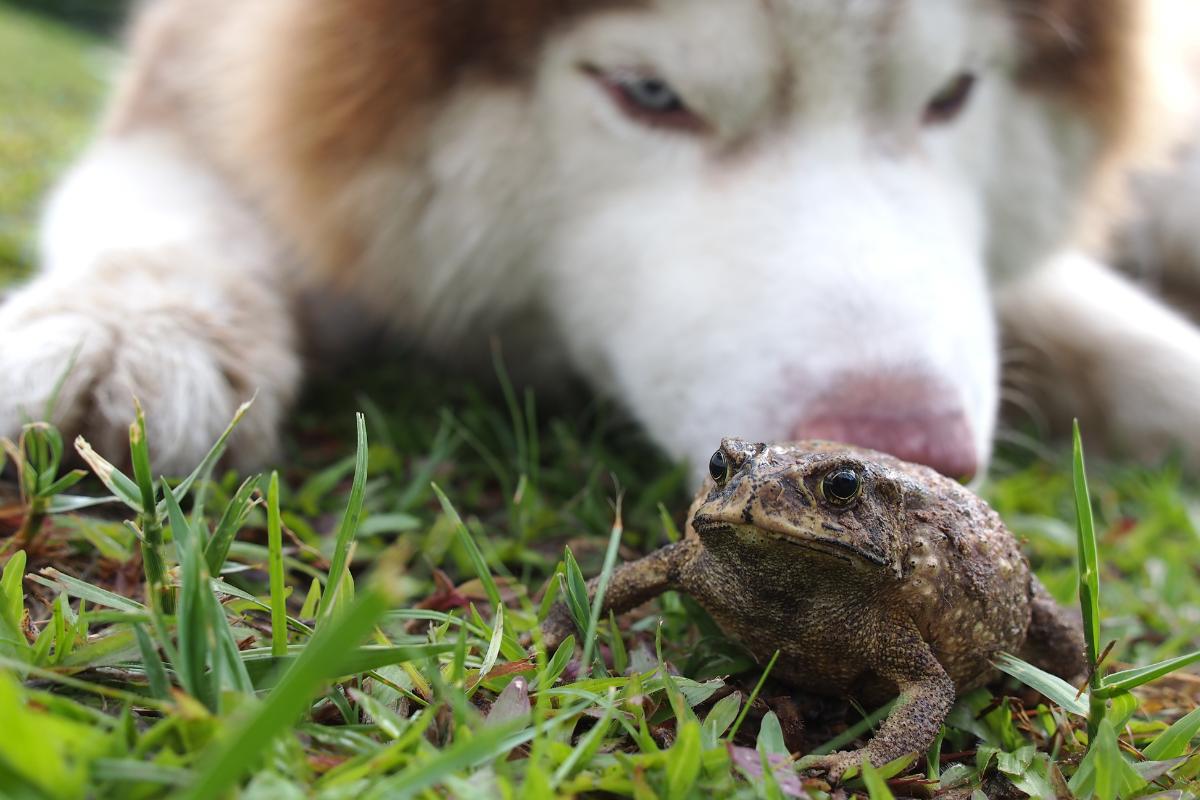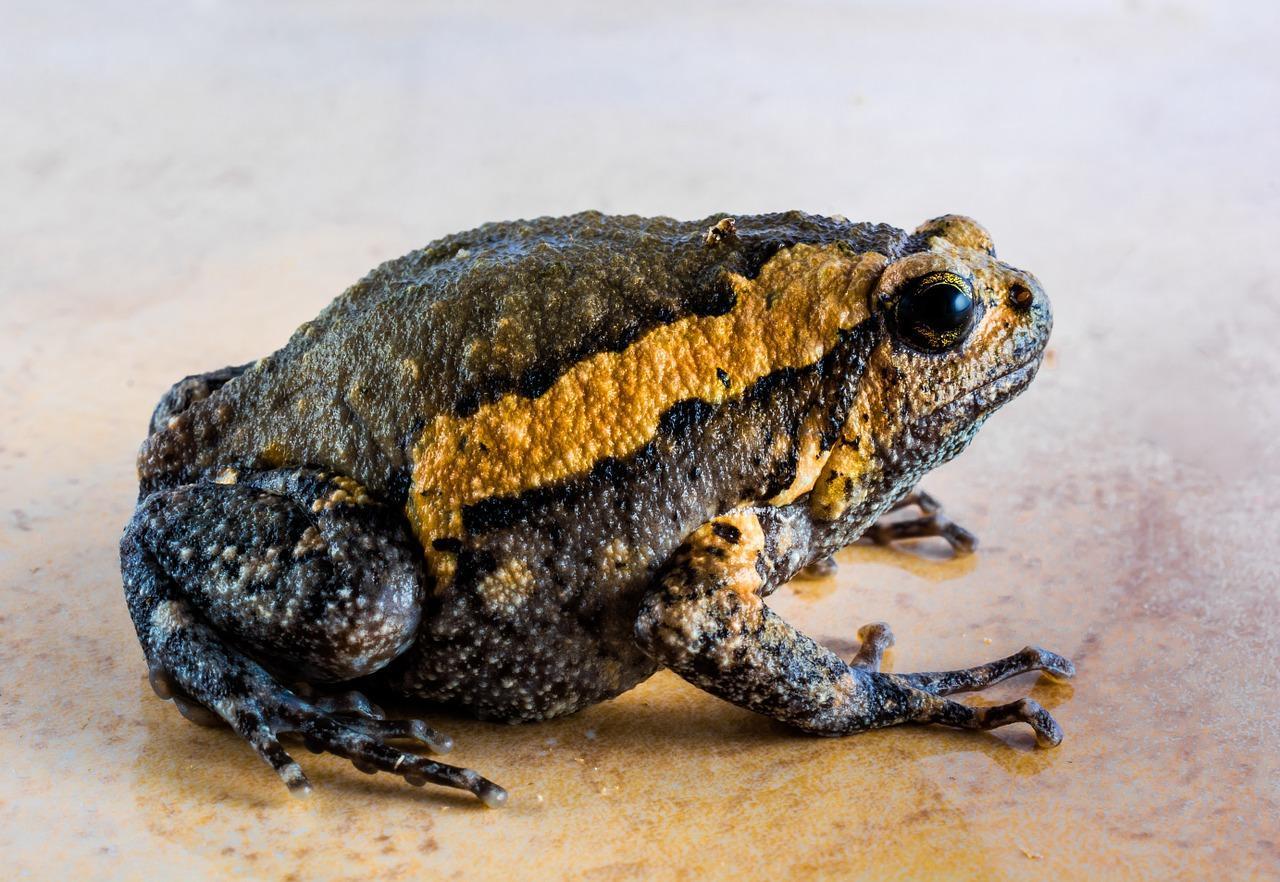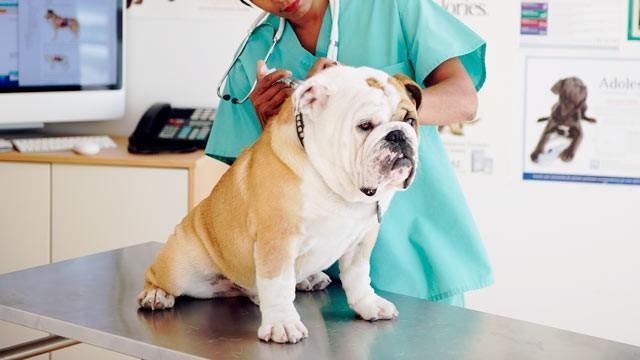What Happens When My Dog Bites a Toad?



See files for Dogs
When a dog bites a toad, it can lead to a potentially dangerous situation. Certain species of toads, such as the cane toad or toads from the genus Bufo, secrete toxins through their skin as a defense mechanism. These toxins contain chemicals known as bufotoxins, which can be harmful to dogs if ingested. Upon biting a toad, the dog may experience immediate symptoms such as drooling, pawing at the mouth or vomiting. In severe cases, the toxins can cause cardiac arrhythmias, seizures or even be fatal.
At AnimalWised, we ask what happens if my dog bites a toad? It is crucial to seek immediate veterinary assistance if a dog bites a toad to prevent further complications and ensure proper treatment.
Are toads toxic to dogs?
Toads and certain frogs can pose a risk of poisoning to dogs. From a taxonomic standpoint, frogs and toads are the same animal. However, there are some notable differences between frogs and toads. Frogs typically have smooth, moist skin and are more likely to live in or near water. Toads, on the other hand, have dry, warty skin and are often found in terrestrial habitats. Despite this, toads will still need a humid environment to survive.
Especially some species like the cane toad (Bufo marinus), toads secrete toxic substances called bufotoxins. These toxins are primarily produced by specialized glands located on the skin. When a dog bites or licks a toad, the toxins can be absorbed through the mucous membranes in the mouth and cause intoxication. The severity of the toxicity depends on factors such as the species of toad, the amount of toxin ingested, and the size and health of the dog.
Bufotoxins affect the dog's nervous, cardiovascular and gastrointestinal systems. The risk assessment of toad poisoning in dogs should consider the geographical distribution of toxic toad species, such as the cane toad in certain regions. Dogs that live in or frequently encounter areas where toxic toads are found are at a higher risk.
The risk is elevated for dogs with a tendency to investigate or bite objects in their environment. It is important for dog owners to be aware of the presence of toxic toads in their surroundings and take precautions to prevent their pets from interacting with them. Immediate veterinary care should be sought if a dog is suspected of having been exposed to toad toxins.
What happens when a dog bites a toad?
Although most toads have some toxicity for dogs, most are only mildly toxic. This means the dog may not show any symptoms, especially if they do not ingest the toad. However, some toads can be highly toxic to dogs. below is a step-by-step explanation of what happens when a dog licks, bites, or eats a toad:
- Contact: when a dog licks, bites, or comes into contact with a toad, the toad's skin may release toxic substances such as bufotoxins.
- Absorption: the dog's mucous membranes, primarily in the mouth, allow for the absorption of the toxic substances. The toxins can be rapidly absorbed through the membranes, entering the bloodstream.
- Toxin effects: once in the bloodstream, the bufotoxins affect various systems in the dog's organism. The specific effects and severity depend on the species of toad, the amount of toxin ingested and the dog's size and health.
- Nervous system: the toxins primarily target the dog's nervous system. They can cause disorientation, confusion and abnormal behaviors. In severe cases, they may lead to seizures, tremors or even coma.
- Cardiovascular system: toxins can also affect the dog's cardiovascular system. They may disrupt the heart's normal rhythm, leading to irregular heartbeats, abnormal heart rates, or even cardiac arrest.
- Gastrointestinal System: the dog may experience gastrointestinal symptoms such as drooling, foaming at the mouth, vomiting and diarrhea due to the irritant properties of the toxins.
It's important to note that the onset of symptoms of dog poisoning can be rapid, often occurring within minutes of contact with a toxic toad. The severity of the symptoms depends on various factors, but immediate veterinary attention is crucial to assess the dog's condition. After diagnosis and assessment, the vet can provide appropriate treatment and mitigate potential complications.

Symptoms of toad poisoning in dogs
As we have seen, toad poisoning in dogs can affect various parts of their organism. This can lead to a range of symptoms, which vary in severity depending on certain factors. These include the species of toad, the amount of toxin ingested and the size and health of the dog. The general symptoms of toad poisoning in dogs may include:
- Drooling and foaming at the mouth
- Pawing at the mouth or face
- Redness and irritation of the gums and oral tissues
- Vomiting
- Diarrhea
- Disorientation or confusion
- Abnormal heart rate or rhythm
- Difficulty breathing
- Seizures
- Collapse or loss of consciousness (in severe cases)
As explained above, if you suspect your dog has been exposed to a toxic toad or if any of these symptoms are observed, it is critical to seek immediate veterinary attention to ensure proper diagnosis and treatment.
Learn more about another type of reaction with our article on anaphylactic shock in dogs.
First aid for when a dog bites a toad
If your dog bites a toad and you suspect it may be toxic, it's crucial to take immediate action. Here is a detailed first aid protocol to follow:
- Remove the dog from the area: move your dog away from the toad to prevent further exposure to its toxins. Be cautious and ensure your safety as well.
- Rinse the mouth: if the dog's mouth is still coated with saliva or toad secretion, use a hose or faucet to gently rinse the mouth. Be careful not to let the water run down the throat, as this could cause choking or drowning. Tilt the dog's head downward to allow the water to flow out.
- Protect yourself: wear gloves or use a cloth or towel to handle your dog, especially if there is still toxin residue on their fur or skin. This prevents accidental exposure to the toxins.
- Contact a veterinarian: immediately call your veterinarian or an emergency veterinary clinic to inform them about the situation and seek guidance. Provide details such as the species of the toad if known.
- Observe your dog: keep a close eye on your dog's behavior and symptoms. Note any changes, such as excessive drooling, vomiting or disorientation. This information will be crucial for the veterinarian.
- Do not induce vomiting: unlike some other toxins, inducing vomiting is not recommended for toad poisoning. It can cause further complications or aspiration if the dog is already showing signs of distress.
- Prevent dehydration: offer your dog small amounts of water to prevent dehydration, but avoid forcing them to drink. Keep in mind that excessive water intake may worsen vomiting.
- Transport safely: if the veterinarian advises bringing your dog in for immediate care, transport them in a safe and secure manner. Be cautious and gentle, as their condition may be unstable.
Remember, this first aid protocol is not a substitute for professional veterinary care. Toad poisoning can be life-threatening and prompt veterinary treatment is essential. Always consult a veterinarian for accurate advice tailored to your dog's specific situation.

Toad poisoning treatment for dogs
The specific treatment protocol for a dog poisoned by a toad will depend on the severity of the poisoning and the clinical condition of the dog. After administering first aid and contacting a veterinarian, here is a general outline of the treatment approach they may follow:
- Stabilization: the veterinarian will first assess the dog's vital signs, including heart rate, breathing and blood pressure. If necessary, they will provide supportive care to stabilize the dog's condition. This may include administering oxygen, intravenous fluids or medications to control seizures or abnormal heart rhythms.
- Decontamination: the veterinarian may perform further decontamination measures if needed. This can include rinsing the dog's mouth with a solution to neutralize the toxins or bathing the dog to remove any remaining toxin residue on the skin.
- Monitoring and symptomatic treatment: the dog will be closely monitored for any changes in their condition. The veterinarian will address specific symptoms as they arise. For example, medications may be administered to control vomiting, provide anti-inflammatory effects or support cardiovascular function.
- Blood work and laboratory tests: the veterinarian may conduct blood tests to assess organ function, electrolyte levels and the extent of any potential complications. These tests can guide the veterinarian in determining the appropriate course of treatment.
- Antidote administration: in certain cases, the veterinarian may administer specific antidotes or medications that can counteract the effects of the toad toxins. The choice and availability of antidotes will depend on the specific toxin involved and regional protocols.
- Supportive care: the veterinarian will provide supportive care as necessary, tailored to the dog's individual needs. This may include continued fluid therapy, medications to manage symptoms and close monitoring of the dog's overall well-being.
It's important to note that the treatment protocol can vary based on the veterinarian's assessment, the specific toxin involved and the dog's response to treatment. Each case may require individualized care. Prompt veterinary attention is crucial to ensure the best possible outcome for a dog poisoned by a toad.

This article is purely informative. AnimalWised does not have the authority to prescribe any veterinary treatment or create a diagnosis. We invite you to take your pet to the veterinarian if they are suffering from any condition or pain.
If you want to read similar articles to What Happens When My Dog Bites a Toad?, we recommend you visit our First aid category.








